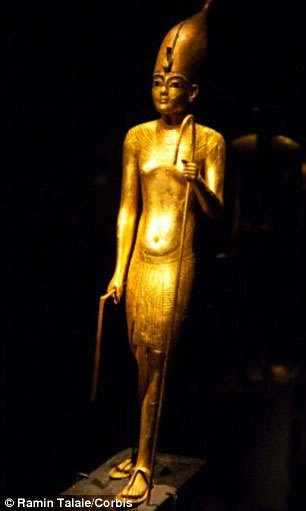
The Egyptian boy king had man boobs that are now thought to be due to a genetic condition that eventually killed him
Hutan Ashrafian, a lecturer in general surgery at Imperial College London, has hypothesized that the most famous Egyptian Pharaoh had manboobs that were caused by an inherited condition.
Mr Ashrafian says several statues of Tutankhamun, who died aged 18 or 19, show ‘prominent’ gynecomastia, the medical term for man boobs which is rare in depictions from the period.
Sculptures and paintings of the pharaoh, and four of his close male relatives, depict them with unusually large breasts and wide hips. To add evidence to his theory, Mr Ashrafian says, all of these kings died relatively young suggesting they may have shared an inherited condition.
He believes they had a type of epilepsy in the brain’s temporal lobe in which seizures can cause vivid hallucinations. This would also explain their feminine features, such as their male breasts, as the temporal lobe is connected to parts of the brain involved in the release of sex hormones.
As this is a genetic condition and that no modern gynecomastia pills would of helped them, we think that they may have used some sort of chest bindings to reduce their man boobs. That would make the Egyptians the inventors of the gynecomastia shirt over 3000 years ago!
 0
0




